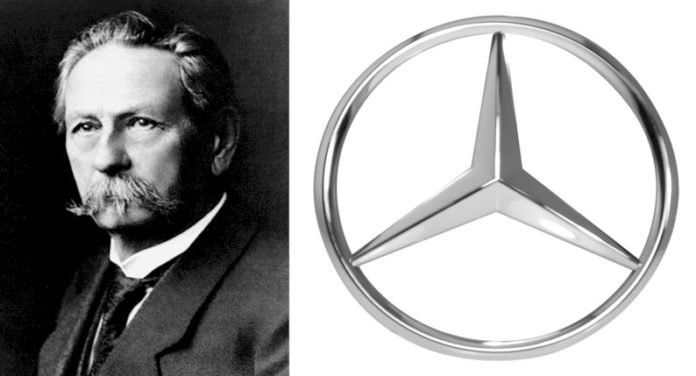This is a look at the Mercedes Logo and the history of the company
The silver three-pointed star of the Mercedes-Benz logo is an international treasure. Consumers from every continent in the world have experienced and enjoyed the quality of cars that only the German automotive giants can. The profits of their sales across the globe are well up into the billions of dollars.
However, the now-famous three-pointed Mercedes logo was a long-term work in progress that began over 100 years ago. Today, we take a closer look at the logo of Mercedes-Benz, how the company grew, and how the logo grew along with it.
Let’s look back to the past and find out how Mercedes-Benz started as a company, and they grew into the powerhouse we know today.
The History Of Mercedes-Benz
1888: The Birth Of The First Automobile Mercedes-Benz
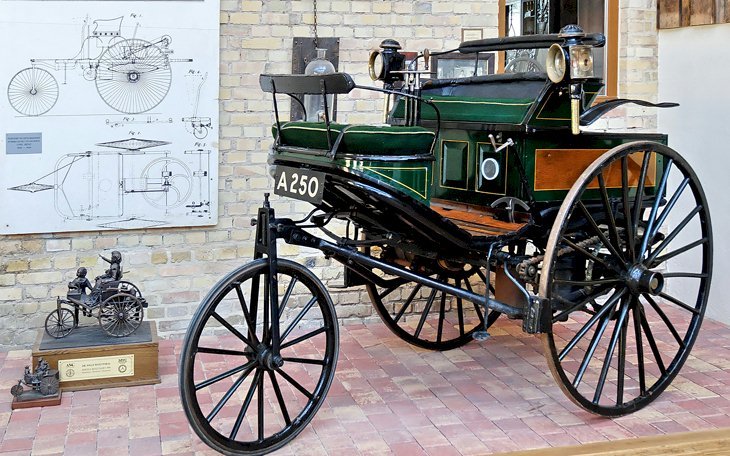 The world really wouldn’t be what it is today without particular inventions, the computer, the airplane, and, of course, the automobile – an essential chapter in the history of transportation. People would get from place to place quicker and could travel in great comfort as they did so. Horses were soon becoming a thing of the past.
The world really wouldn’t be what it is today without particular inventions, the computer, the airplane, and, of course, the automobile – an essential chapter in the history of transportation. People would get from place to place quicker and could travel in great comfort as they did so. Horses were soon becoming a thing of the past.
However, equally importantly, it transformed the mindset of Luddites, who were opposed to new technology and new ways of thinking. One of the pioneers in changing their mindset was a man called Karl Benz, one of the owners of the Mercedes company.
History has credited Karl Benz with inventing the first gasoline-powered automobile in 1885. Still, due to opposition from the Luddites (opposed to technology and progress) who opposed Benz fiercely, he was reluctant to bring it out to display his new creation to the public.
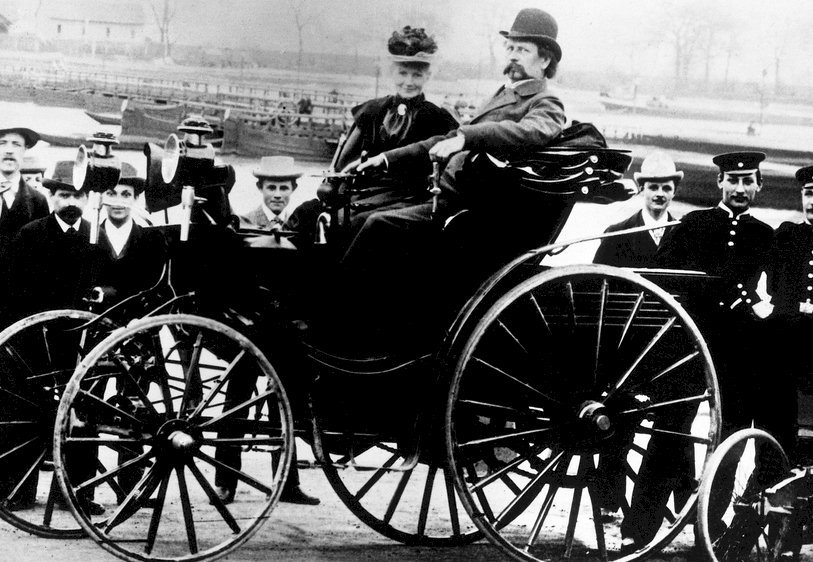 Karl’s wife, Bertha Benz, is responsible for displaying the vehicle to the world. On August 12th, 1888, she made an iconic journey from Mannheim, the Pforzheim. She proved to all the doubters and naysayers that an automobile could travel for long distances, which revolutionized the way people thought of car travel.
Karl’s wife, Bertha Benz, is responsible for displaying the vehicle to the world. On August 12th, 1888, she made an iconic journey from Mannheim, the Pforzheim. She proved to all the doubters and naysayers that an automobile could travel for long distances, which revolutionized the way people thought of car travel.
This trip went down in automobile legend as the event that created the world-renowned brand, Mercedes. Today, Mercedes is one of the largest car manufacturers globally and is the first choice of millions of people who want to travel in a luxury car.
The History Of Mercedes-Benz
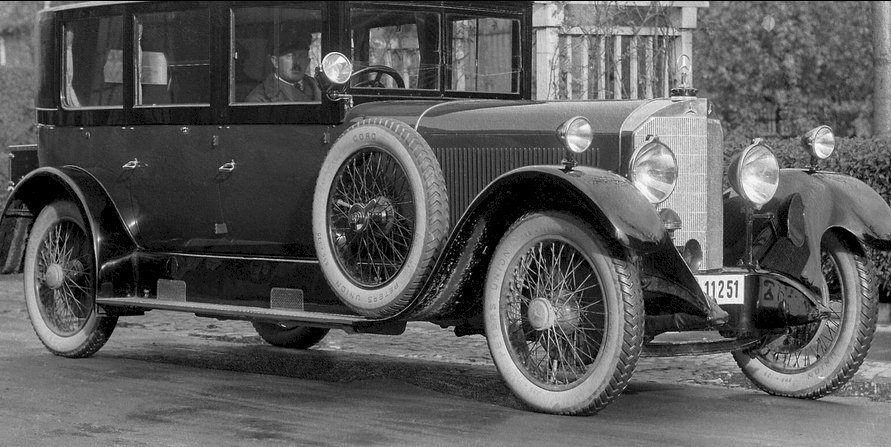 Bertha Benz’s historic trip’s immense popularity captivated the world, and international interest in automobile technology was at an all-time high. This excitement led to a great collaboration between two of Germany’s largest automobile giants at the time.
Bertha Benz’s historic trip’s immense popularity captivated the world, and international interest in automobile technology was at an all-time high. This excitement led to a great collaboration between two of Germany’s largest automobile giants at the time.
In 1883 the Benz & Cie was started by none other than Karl Benz, and he had been in fierce competition with Daimler Motoren Gesellschaft (DMG). After a year of butting heads, the two companies saw the value in each other’s visions and joined hands in 1926 under the name of Mercedes-Benz. World War I had financially crippled German businesses, but the newly formed Mercedes-Benz was due to kickstart the German automobile industry with gusto.
The Merger Of DMG And Benz & Cie
Combining these two massive companies marked the beginning of a new era of luxurious car production that would one day become the world’s watermark for high quality. The company flourished in the ’50s and 60s and became one of the largest automobile companies on Earth.
Mercedes-Benz was true to its slogan of ‘the best or nothing,’ the company superseded any of its competitors with its series of luxurious cars that were exquisite in design and excellent in performance.
The German economy was heavily regulated and suffered terribly at the end of World War I. This nation ordeal continued into World War II, and many German companies incurred losses in the form of reparations that allied forces made them pay via The League of Nations.
With Karl Benz and Gottlieb Daimler at the helm, Mercedes-Benz achieved heights of success after World War II and the end of the Nazi regime. The economic boom in Germany after the war and the globalization of Mercedes contributed to its rapid growth.
By 1954, the automotive giant returned to profitable ways once more, and it continued to thrive throughout the 50s and 60s. The company’s phenomenal growth led to its expansion into the international arena, and Mercedes-Benz started to become a globally recognized name. Today, they sell vehicles in two hundred different countries under the twelve other brand names.
Mercedes-Benz is the second most valuable brand globally, with an estimated brand value of $47.83 billion US dollars.
The History of the Mercedes-Benz Logo
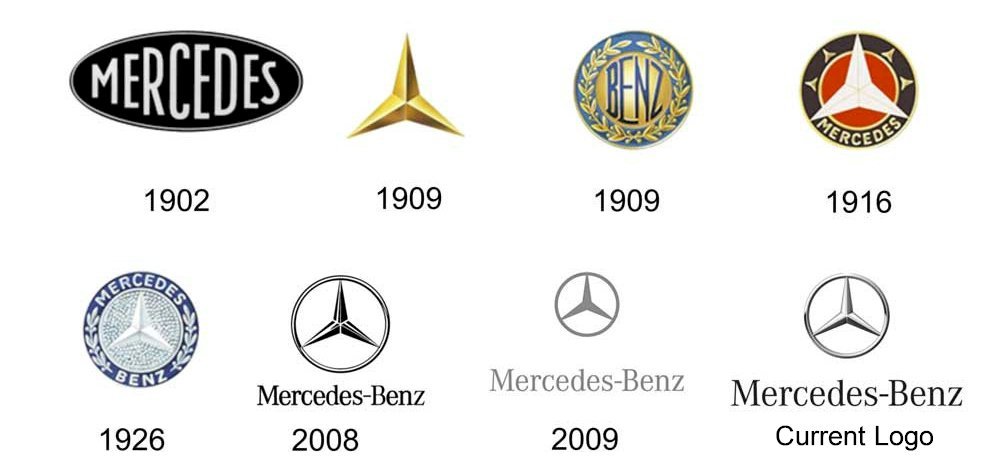 We’ll explain the rest of this great company’s history later, but first, let’s delve into the logo. The Mercedes logo is one of the most recognized brands anywhere in the world. The famous logo design represents the professional ethos, integrity, and rich legacy of the automotive company.
We’ll explain the rest of this great company’s history later, but first, let’s delve into the logo. The Mercedes logo is one of the most recognized brands anywhere in the world. The famous logo design represents the professional ethos, integrity, and rich legacy of the automotive company.
Let’s look at the Mercedes-Benz logo’s history, considered among the world’s most famous brand identities, and how the design elements came together.
Shape of the logo
The three-pointed star is the most noticeable thing in the Mercedes-Benz logo. The three points of the three-prong triangle signify the power of the three elemental forces on Earth – Land, air, and sea.
The sharp, shiny imagery looks stunning to the eyes. It conveys the true essence of the brand personality of Mercedes, and the futuristic look shows the companies ambitions for a bright and prosperous time ahead.
Color of the logo
Mercedes aptly uses the shade of metallic silver in its corporate identity. It is said that silver is a favorite color of elites in the German monarchy, which is why this color was used for the Mercedes-Benz brand, signifying their great company mindset.
The silver Mercedes three-pointed star is as iconic an image as the yellow ‘M’ of Mcdonalds and remains one of the world’s most recognizable symbols to this day.
Logo font
The fonts were created in a corporate light and give the design a sophisticated look as well as keeping in theme with the shiny silver of the emblem and truly reflects the personality of the logo design of Mercedes-Benz.
1902: The First Mercedes-Benz Logo
In 1902, Mercedes registered the name ‘Mercedes’ to represent its business empire, creating its first brand identity. The logo only featured the title at the time, the imagery of the three points would come into existence later. The font design looked both elegant and sophisticated at the same time.
1909: The Famous Three-Pointed Star Logo
After seven years, Mercedes decided to add the iconic and world-known logo of the three-pointed star. The year 1909 saw the creation of the famous symbol, which continued to grace the car industry from that day to this.
Gottlieb Daimler created the logo when he wrote his wife a postcard and drew the first crude design. He also predicted that this logo would bring the company great success in the future and springboard to extraordinary heights. He wasn’t wrong.
1916: The New Mercedes-Benz Logo With Four Stars In The Ring
In 1916, there was a redesign in the logo – four separate three-point stars surrounded the primary star now, and the company name is seen at the bottom. The emblem remained the brand identity of the Mercedes for the next decade.
1926: A New Design With a Laurel Wreath
To incorporate the brand identities of both businesses, in 1926, a laurel wreath was added to the design. The wreath was once a part of the Benz & Cie motors emblem, and when they merged with Daimler-Benz AG, the decision was made to add the wreaths. This formed a new logo that inscribed the names of both companies.
2008: The Silver Logo Design That Looked More Sophisticated
The silver color is associated with Mercedes ever since it participated in 1934, Nürburgring Grand Prix, the first-ever Grand Prix to be raced. In those days, the Mercedes Grand Prix quality cars were referred to as ‘Silver Arrows,’ beginning the tradition of silver being the primary color of choice for the company. This tradition continued when silver became the color representing the brand for the 1954 and 1955 Formula One Grand Prix’s.
The logo itself remained in its original blue color, but the badge standing at the radiator on the bonnet changed to silver. The silver color officially became the back of the logo in 2008, where it remains a symbol of the Mercedes-Benz brand image. Just imagine a Mercedes car that didn’t have that iconic silver three-pointed star at the front.
The Mercedes Logo Design
 The Mercedes-Benz logo is the creative expression of one of the world’s most reliable and exciting car manufacturers. After inspiring generations of automotive consumers for over a hundred years, will the future brand identity of Mercedes-Benz continue to create the visual appeal that so many have grown to know and grow accustomed to seeing?
The Mercedes-Benz logo is the creative expression of one of the world’s most reliable and exciting car manufacturers. After inspiring generations of automotive consumers for over a hundred years, will the future brand identity of Mercedes-Benz continue to create the visual appeal that so many have grown to know and grow accustomed to seeing?
We may even ask, ‘Will future brand identities match with the ethos and the quality that we all know and love?’. We’ll have to find out in the next few years. Their logo design has resonated with its audience for almost a century, and its new logo design has captivated consumers’ hearts and minds every decade they are released.
Whether we look back at their first brand identity of 1902 that showed the Mercedes name, the three-pointed logo with the laurel wreath of 1926 or the redefined silver logo of 2008, Mercedes carved a unique character in the car industry with its superb logo design.
From the US to Europe to Sub-Saharan Africa to the Indian subcontinent, Mercedes’ brand identity remains among the most recognized on Earth. We only hope that the company’s well-earned success continues as the years (and the logo designs) carry on into the future.

